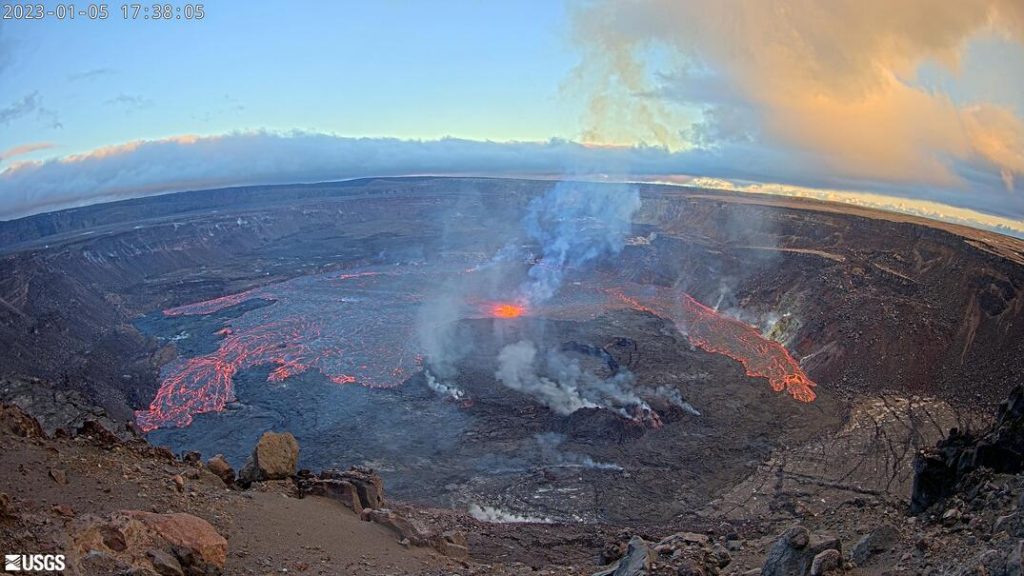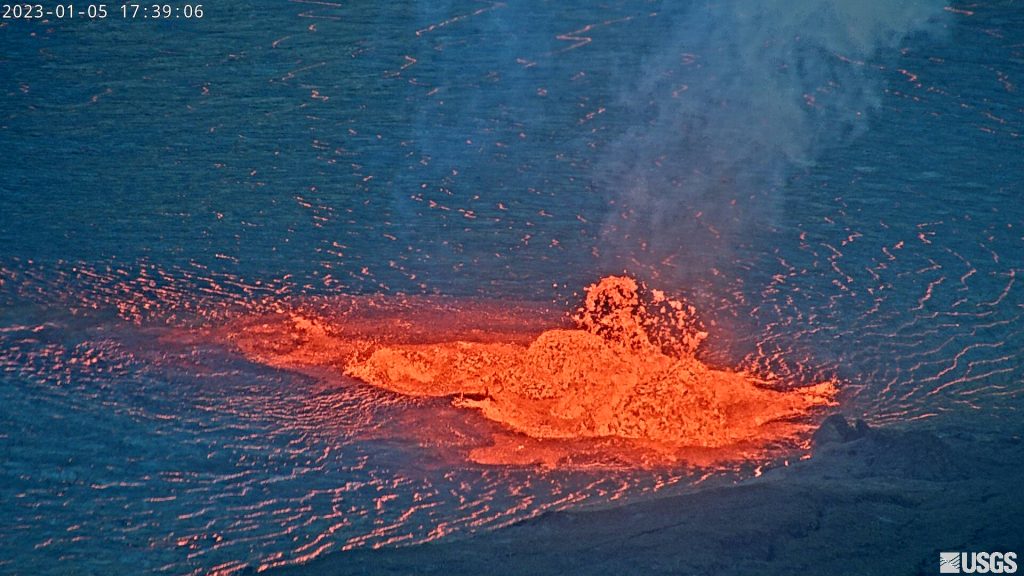Kīlauea begins erupting, initial flow is confined to Summit caldera

Kīlauea volcano began erupting Thursday afternoon, Jan. 5, following a brief period of increased seismic activity.
Lava remained confined to the Halemaʻumaʻu crater in its summit caldera, within Hawai‘i Volcanoes National Park, according to officials with the Hawaiʻi Emergency Management Agency.
There is no threat to communities at this time, according to a HI-EMA update.
The eruption began at about 4:34 p.m. HST Thursday, when the glow of fresh lava was detected on the crater floor, according to the United States Geological Survey’s Hawaiian Volcano Observatory. HVO raised the volcano alert level to “warning” and the aviation threat level to “red,” the highest level in each series.

“The opening phases of eruptions are dynamic. Webcam imagery shows fissures at the base of Halemaʻumaʻu crater generating lava flows on the surface of the crater floor. The activity is confined to Halemaʻumaʻu and the hazards will be reassessed as the eruption progresses,” according to an information statement issued by the HVO.
Scientists with the Hawaiian Volcano Observatory say multiple minor fountains are active on the crater floor, with several bursts as high as 164 feet during the initial part of the eruption. The HVO reports that the summit tilt switched from inflation to deflation around 5 p.m. Following the eruption onset, summit earthquake activity greatly diminished and eruptive tremor (a signal associated with fluid movement) resumed.
The eruption followed a brief period of heightened seismic activity beneath the summit and physical inflation of the mountain that began Thursday morning. At about 3:20 p.m., HVO had raised the alert level to “watch” and “orange;” the eruption began a little more than an hour later.
The new activity comes following an eruption pause in early December. Reduced activity at both Mauna Loa and Kīlauea in December, resulted in lowered volcano alert levels at both locations on Dec. 13, 2022.
Kīlauea caldera eruptions may continue for a long period of time without threatening people or property beyond the immediate summit of the volcano, authorities said.
HVO scientists will continue to monitor the eruption and provide guidance on the threat caused by any changes in activity. The Hawai‘i Emergency Management Agency and Hawai‘i County Civil Defense Agency are in contact with the experts at HVO and will advise the public of any safety concerns.











